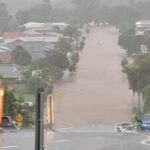In Part 1 of our series on Safe Work Method Statements, or SWMS, we looked at the lesser known and lesser understood legislative requirements for SWMS. This focused largely on the required content for a SWMS in addition to the better understood step-by-step identification of hazards and controls relevant to the high-risk construction work activity being undertaken. We covered all but one requirement of Section 299 of the Qld WHS Regulation, so Part 2 will cover this item as well as other requirements for SWMS such as the need for their review, compliance and the necessary record keeping aspects.
In addition to the items covered in Part 1 of this series, a SWMS must:
- Section 299(4) – If a SWMS involves a risk of a person falling more than 2 metres, where the only control measures to be implemented are administrative controls or the provision of personal protective equipment, the SWMS must describe all control measures considered in determining which control measures to implement. For this activity, the SWMS must contain information where it has considered all fall prevention and fall arrest control measures including temporary work platforms, barriers, scaffolding, ladders, work sequencing, training, permits, signage, work positioning systems and safety harnesses. If certain fall prevention control measures cannot to be used because it is not reasonably practicable, the SWMS must include this information.
What else relating to SWMS is required under the Regulation?
- It goes without saying that if you need to have a SWMS for carrying out high-risk construction work, then the work being completed must be completed in accordance with the requirements of the SWMS. This requirement is covered within Section 300. This section also requires the Person Conducting a Business or Undertaking (PCBU) to have in place arrangements for ensuring the work is completed in accordance with the SWMS. An example of this could include an appropriate level of supervision, monitoring and reviewing of the work. Where it is identified that the work is not being completed in accordance with the SWMS, then work must immediately stop (or as soon as it is safe to do so) until it can be resumed in accordance with the SWMS. Changes are permitted to be made to the work methodology so long as these are captured within an updated SWMS and include the risks associated with the change being identified, assessed, controlled so far as is reasonably practicable and monitored for effectiveness. Workers need to be consulted regarding the change (if there is a WHS impact) and should re-sign the SWMS acknowledging the change and their understanding of the new methodology.
- Section 301 requires that for a Construction Project, a PCBU must give a copy of their SWMS to the Principal Contractor prior to high-risk construction work activities starting.
- Section 302 requires a PCBU to review the SWMS. For the PCBU who has commissioned the work, or their Principal Contractor, this review is aimed at ensuring legislative compliance with the items covered in Part 1 of our series, as well as to ensure there is no conflict of the SWMS against the requirements, policies and procedures of the PCBU or Principal Contractor. It is important to make a distinction here that the review of the SWMS is not approving the SWMS. The purpose of the SWMS review is to ensure legislative compliance. Clients and Principal Contractors may place themselves at greater exposure if they approve a contractor’s SWMS as it could be interpreted that they are also approving the contractor’s methodology, and potentially a greater liability should something go wrong.
- Section 303 requires a copy of the SWMS to be kept by the PCBU until the high-risk construction work to which it relates is completed. If a notifiable incident occurs in connection with the high-risk construction work to which the statement relates, the PCBU must keep the SWMS for at least 2 years after the incident occurs. Section 303 also requires the SWMS to be readily accessible to a WHSQ Inspector or any worker engaged by the PCBU for that high-risk construction work activity for this period.
Lastly, there is differing opinion over whether a SWMS can be used for work activities other than high-risk construction work. The short answer is yes they can, however it is not a legislative requirement. There is nothing prohibiting this, however, most organisations tend to restrict the development and use of SWMS to the 18 defined high-risk construction work activities within Section 291 of the WHS Regulation, and use other risk assessment formats for all other work activities.
As for the provision of all WHS related information, training and instructions (including work procedures and SWMS), there is a duty to provide it in a way that is readily understandable by any person to whom it is provided – see Section 39(3) of the WHS Regulation. This would include lengthy and complex SWMS and work procedures. It may be prudent to consider the “less is more” approach so that critical safety-related information isn’t lost in pages and pages of detail.
Please refer to the WHS Regulation for the full legislative requirements for Safe Work Method Statements.
Please contact QRMC for information or assistance.









